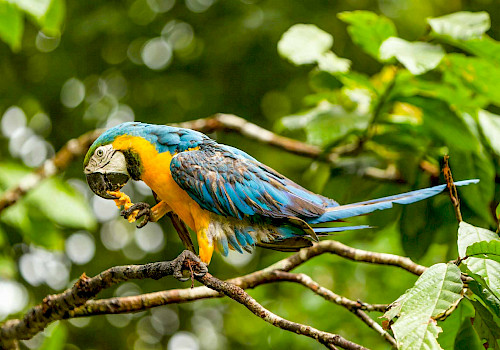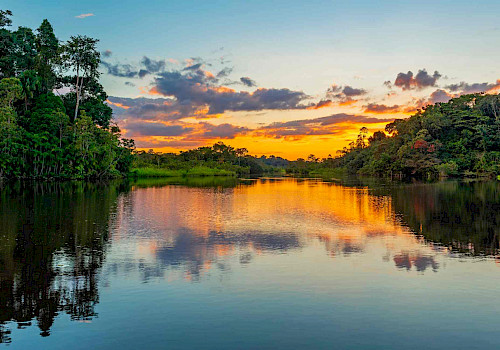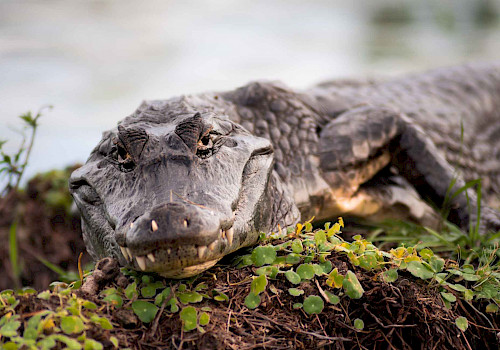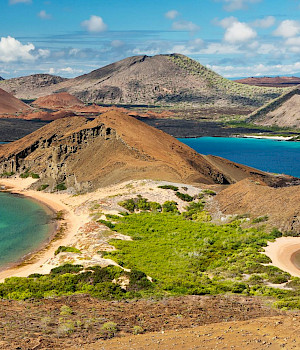

October 13, 2023
The Amazon Rainforest is an unparalleled place; it is the largest and most bio-diverse ecosystem in the world with the most incredibly diverse flora and fauna. It contains by itself over 40,000 plant species with many still yet to be discovered as remote parts of the rainforest remain undiscovered.
This vast region covers about two-thirds of South America and spans eight countries: Brazil, Bolivia, Peru, Ecuador, Colombia, Venezuela, Guyana, Suriname and French Guiana. The Amazon contains 1.4 billion acres of forest and is home to and one of the last refuges for jaguars, harpy eagles, sloths, black spider monkeys and pink river dolphins.
With such a large area covered it can sometimes be overwhelming to know where to start and what are the best places to visit. Here at Uncover South America, we have compiled a list of some of the top animals and the best places to find wildlife in the Amazon. So, if you are an animal enthusiast and want to discover more about our planet’s Garden of Eden, you couldn’t pick a better place to visit than the Amazon rainforest.
The Top Wildlife to Spot
Macaws are an icon of the Amazon, these highly intelligent and social birds live in flocks of up to 30 birds and can live up to 60 years. Renowned for their colourful feathers and most notably known under their red and blue guise, these friendly birds also come under a variety of different colours such as turquoise and yellow, dark blue and green. A remarkable spectacle when seen soaring through the skies.
The Capybara is the largest rodent in the world and can be found in the more swampy areas of the Amazon, often near lakes and rivers as they enjoy eating the grass found on the riverbanks. Barrel-shaped and covered in dark red and brown fur resembling large guinea pigs, adult capybaras stand around 2 feet tall and may weigh close to 70kg.
Jaguars are the most stunning, elusive, and endangered mammal that can be found in the Amazon rainforest. The third largest cat in the world, they are as much as ease on land as in the water.
Jaguars are the rarest animal to spot while in the Amazon as they mostly come out at night to hunt and are found much deeper into the jungle.
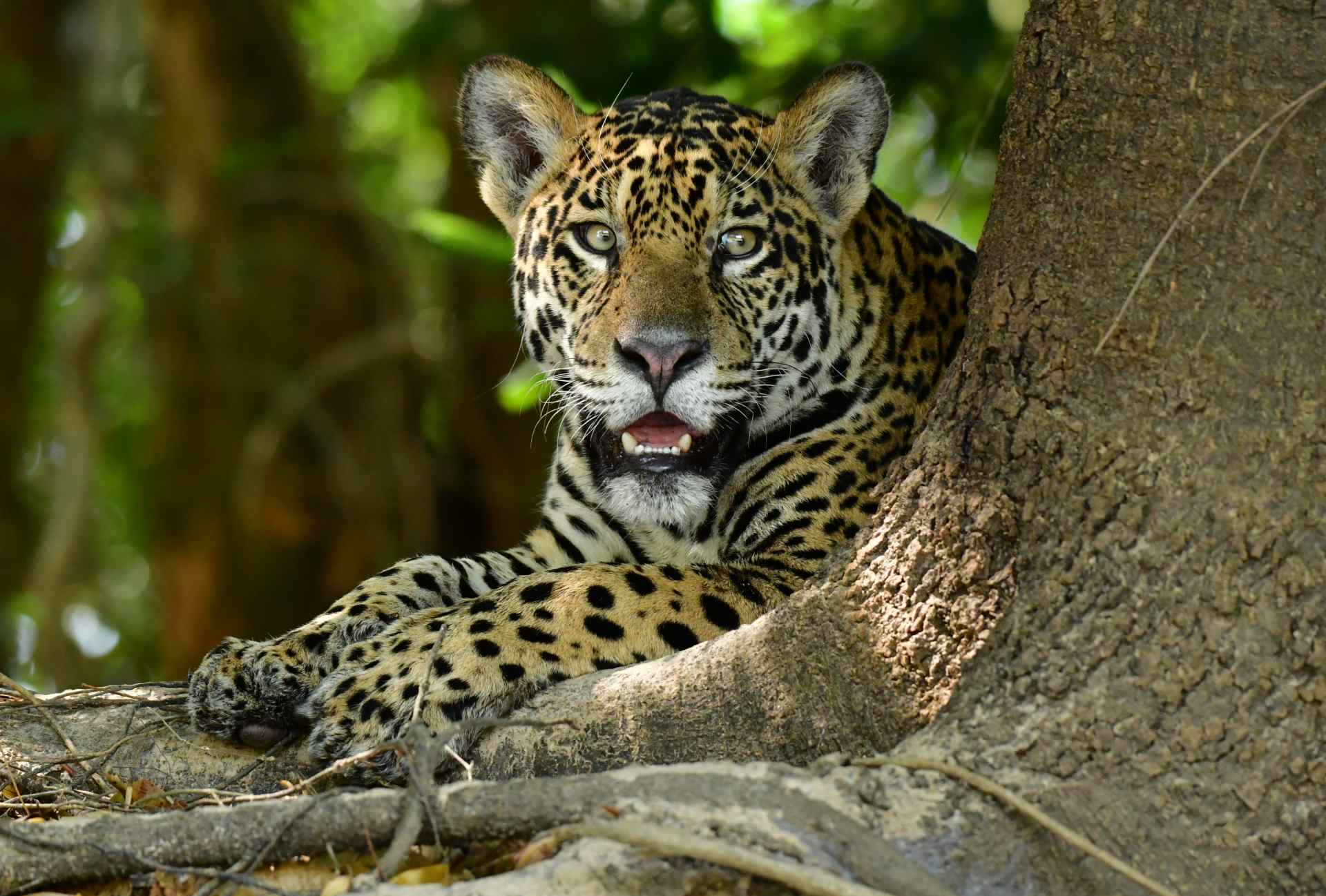
Sloths, known in Spanish as perezosos which means ‘lazy’ are one of the more popular animals to spot in the wild. They are initially hard to spot as they fur blends into the trees and landscape that make their home but once found, travellers need not worry about them rushing away before a picture is taken. Fun fact, it can take them up to a week to come down from their tree to relive themselves.
The Poison Dart Frog is the most colourful amphibian in the jungle with colours ranging from red to blue to yellow. They get their name from the indigenous people who used to capture them and coat the tops of their blow-darts in their toxic secretions.
The Anaconda is the heaviest snake in the world and is one of the most formidable creatures of the Amazon. They thrive on water an the swamps and marshes that are often found in the Amazon are their favoured hunting ground. These reptiles continue to grow throughout their lives and can weigh up to 250kg.
The Best Parks to Visit
Manaus, Brazil
Located right in the centre of Brazil, Manaus is the most popular of destinations to visit the Amazon. Due to its location there is plenty on offer in this city from day trips into the forest or river cruises along the murky waters in search of aquatic life. The further north you travel towards the Rio Negro the more varied will be the wildlife on offer. This is also where the Rio Negro and Rio Solimões meet to form the Amazon River. Within the waters around Manaus, travellers will be able to find some interesting aquatic animals including the endangered black caiman, these predators feed of the capybaras that are also found along the banks of the river and can grow to up to six metres in length. The harpy eagle is also known to soar through the skies of Brazil and Manaus is no exception to this powerful bird who is named after the mythological creatures. The harpy eagle is distinguished by its crown of double crested feathers that fan out around them as well as its distinctive white belly and striped legs.
Rurrenabaque, Bolivia
Rurrenabaque is a small town on the Beni River in Bolivia famous for its pampas wetlands. It is known as the gateway to the rainforest and is a definite place to visit to spot caimans, monkeys and the infamous piranhas. Travellers can opt for a river cruise on a dugout canoe which will allow for an up close view of the water creatures. For those more interested in terrestrial wildlife, head onto Madidi National Park one of the largest protected parks of the region and the most significant one in Bolivia. Travellers will be able to come face to face with a number of birds and especially insects as it is home to 120,000 different species of them. If you are lucky you may even spot a jaguar, one of the most elusive animals that can be found in the Amazon.
Coca, Ecuador
Another popular Amazon hub in the city of Coca in Ecuador located near the Yasuni National Park and is home to a thriving and unique biodiversity. The park is made of various reserves as well as an “Untouchable Zone” that is designated to protect the indigenous people that live there from exploitation. Yasuni is one of the best places for bird watchers as there are more then 600 confirmed species in the area alone. Be sure to bring your binoculars for maximum bird spotting.
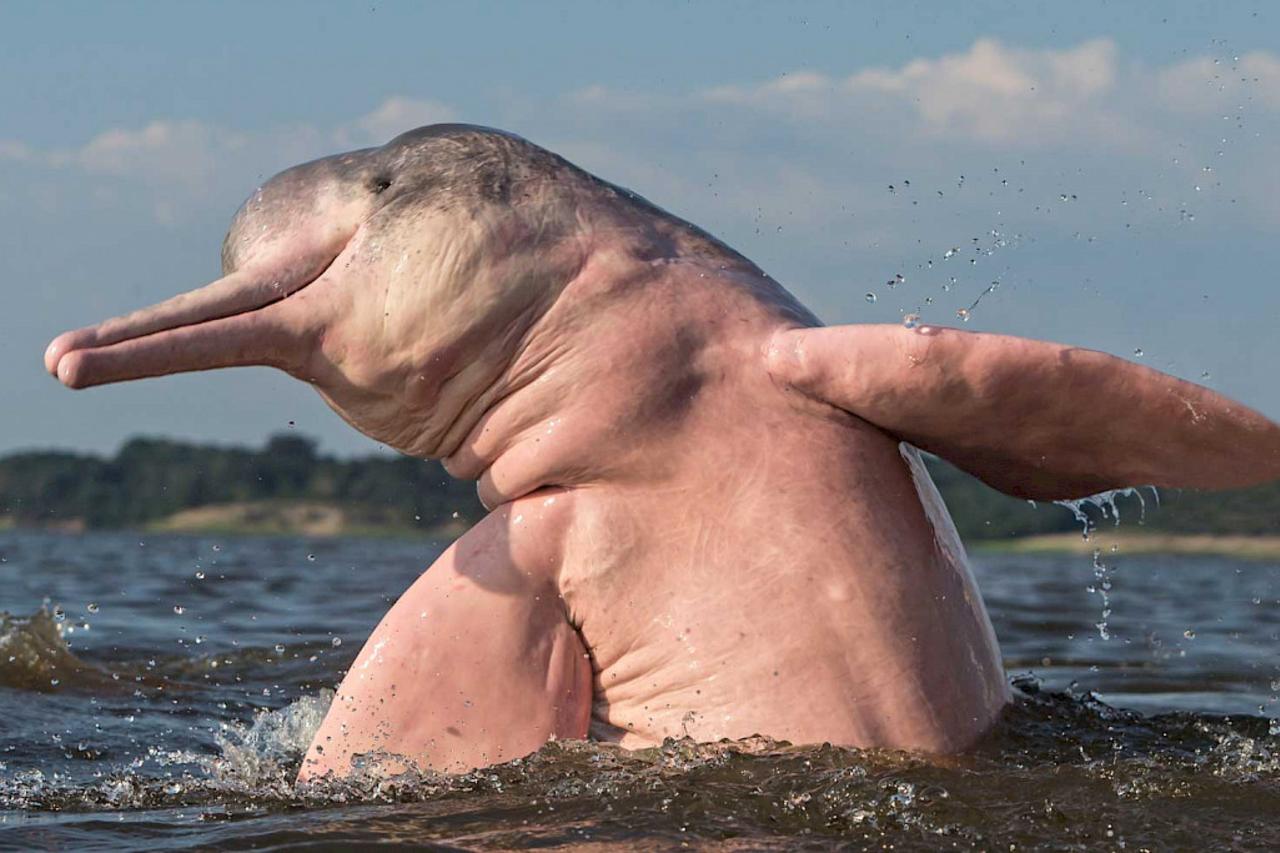
Puerto Maldonado, Peru
Situated east of the ancient city of Cusco, Puerto Maldonado is bordered by the Manu Biosphere Reserve, a sprawling national park. Here too, is a prime place for birdwatching as the infamous macaws feed on the clay licks found in the reserve. The part of the river here is home to the giant otter who when they reach maturity can be as big as a fully-grown human. The Brazilian tapir is a rare sight to see in the Amazon as it lays low during the day, however the Manu National Park is your best bet if you want to catch a glimpse of this elusive animal as it roams the banks of the river during sunrise and sunset. This is also one of the best places to see the almost rare pink river dolphins. Hop onto a canoe and sail the river to bump snouts with them, these specific dolphins only live in freshwater and the more excited they get, the pinker they become!
Chiribiquete National Park, Colombia
Chiribiquete National Park is the largest national park in Colombia with an acreage of 10.6 million square foot. This park is home to thousands of different species, many of which are increasingly threatened such as giant anteaters, woolly monkeys and the Chiribiquete emerald hummingbird. Due to this, it was declared a UNESCO World Heritage site to enable it to continue in its preservation of the different animal and plant species located in the park. The woolly monkey too, who originates solely in the rainforests of South America, is the rarest of the primates that can be found in the park. The Amazon rainforest is also well known for its bats and you will be able to find mouse-eared bats, bulldog bats and short-tailed fruit bats here.
If you are keen for a specific wildlife trip to South America do get in touch with us via email or phone to create your own tailored made itinerary. We will curate everything for you from start to finish, all you need to do is pack your bags and get ready to explore the Amazon rainforest.
If you haven’t already, have a look here for the second part on the wildlife in Patagonia.

